Hair loss is inevitable as you age. Both women and men will experience some degree of thinning, receding, and balding that may affect their type of hairline. However, a mature hairline doesn’t mean you’re destined for a bald future.
However, just because your hairline thins and changes doesn’t mean you’ll become bald. Hairline maturation isn’t always a sign of male pattern baldness. A man’s natural hairline will develop over decades with subtle changes, so keep reading to find out more.
What is a Mature Hairline?
A mature hairline is a naturally occurring stage in men between the ages of 17 and 30, where their juvenile hairline moves further back. It’s completely normal for a man’s hairline to recede by 1/2 inch to 1 inch as they age.
Mature Hairline Examples
As you age, you may notice your hair is thinning along the top and corners. This is the normal maturing of your hairline.
So what are some examples of maturing hairlines?
Brad Pitt’s Hairline
Look at Brad Pitt’s hairline (below). In the first picture, you see his full juvenile hairline. However, in the more recent photos, the corners have thinned, and his male hairline has matured.
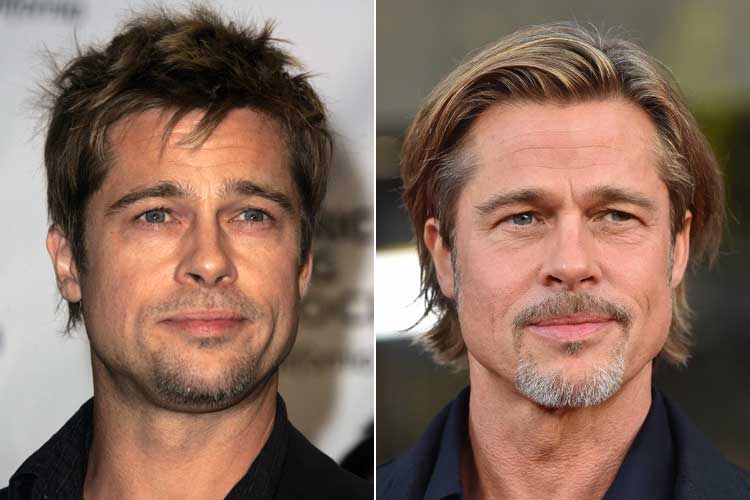
Channing Tatum’s Hairline
While it’s hard to tell with some celebrity hairstyles with some getting their hairlines restructured through hair transplants. Channing Tatum is a good example of a receding hairline.
In Channing’s younger photo, you can see his juvenile hairline runs pretty well straight across. However, you can see his hairline is receding in the later photo. The hair is thicker in the back than on the frontal hairline, indicating these hairs may continue to thin.

Jude Law’s Hair Loss
Jude Law is a good example of someone suffering from male pattern baldness. The change of his hairline has been fully documented in various photos over the years.
His receding hairline became noticeable as he lost much of his mature hairline by age 30. It’s rumored he had hair transplants to recreate his hairline and fill in spots along his “island patch.”
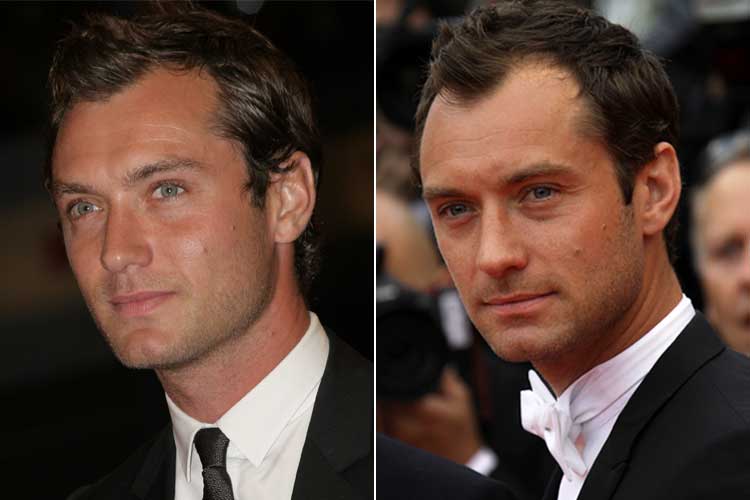
Tom Hanks Hairline
Tom Hanks is another example of male pattern baldness. His hair was receding at the time of filming Forrest Gump. You can now see his hair loss, progression, and possible restoration.

Elon Musk Hairline
Seen at a very early age, Elon Musk started showing signs of thinning hair along with a receding hairline. Also, long rumored he’s had had restoration surgery.
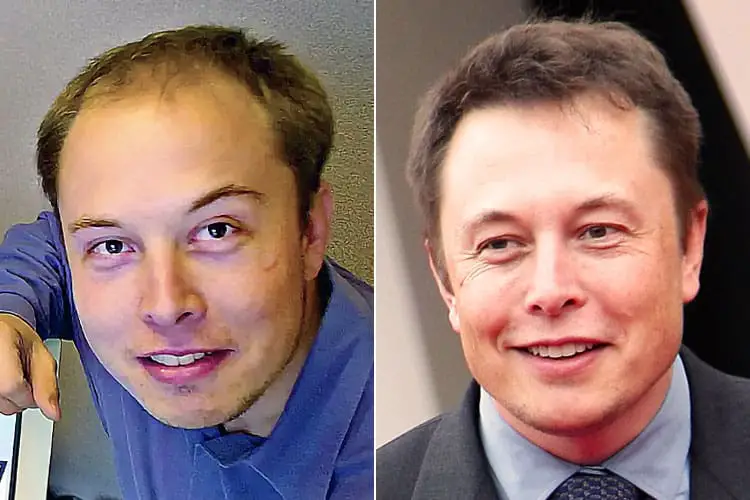
Other Notable Celebrity Hairlines
Other celebrities who’ve improved their hairlines:
- Matthew McConaughey
- Le Bron James
- Mel Gibson
- John Travolta
- Ray Liotta
- see more celebrity hairlines
Celebrity Bald Look
The fact is male pattern baldness affects everyone – even women called “Female Pattern Baldness“. Even if you’re afraid of becoming bald, there are ways to restore your hairline or just take back control.
Actors like Jason Statham, Dwayne “The Rock” Johnson, and Vin Diesel have all embraced the bald look.
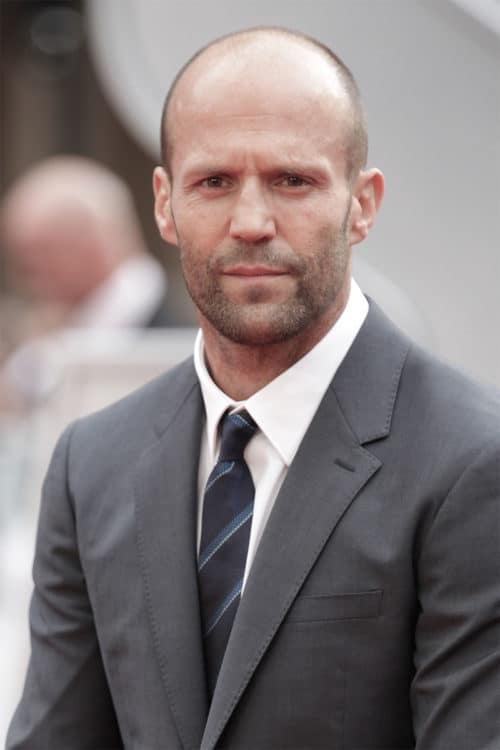
What Causes Hair Loss?
Dihydrotestosterone (DHT) is derived from testosterone and vital for hair production. The blocking of DHT is the cause for male pattern hair loss and why men lose their juvenile hairlines, particularly those predisposed for their genetics.
Types of Hairlines
Juvenile Hairline
A juvenile hairline is one that hasn’t seen any hair loss. There are no “peaks” or valleys, and it fills the right and left corners in with hair and is rounded.

One way to see where your juvenile hairline started is to wrinkle your forehead. The top wrinkle or the highest wrinkle on your forehead is typically where your hairline first originated. When being considered for a hair transplant, doctors often look for this hairline to start reconstruction.
V-Shaped Hairline
The V-shaped hairline is defined by a pointed shape in your hairline instead of running straight across. This shape is completely natural as you age and becomes noticeable when men reach their 30s.

However, if you have a V-shape for a hairline, it doesn’t necessarily mean you’ll lose all of your hair. A combination of DHT and testosterone loss can make corner hair thinning worse.
In some men, the v-shape even develops into a Widow’s Peak with less or no hair in the temples.

If you currently have a V shape, you don’t have to worry about going bald unless you notice other signs of hair loss (see more below).
Mature Hairline
A maturing hairline typically loses hair in the corners by the temples and develops a peak in the middle. Hair at the top of the forehead starts thinning, which pushes back the hairline.

Balding Hairlines
Balding hairlines are more significantly sparse than a maturing hairline. The corners are deeper, and hair looks extremely thin in several areas, such as at the back of the head. These bald spots develop due to male pattern balding, resulting in major sections of hair loss.

Mature hair only recedes from 1 to 1.5 centimeters. Balding hairlines typically recede beyond this, especially around the corners and temples.
Comparing the Types of Hairlines
Juvenile vs Mature Hairline
So how can you tell the difference? What’s it mean to have a mature hairline vs balding?
A juvenile hairline is characterized by a low, straight hairline full around the corners. As the hairline matures, corners begin to lose hair, which develops into a widow’s peak as men age. In addition, the overall hairline moves up, and it can continue to recede.
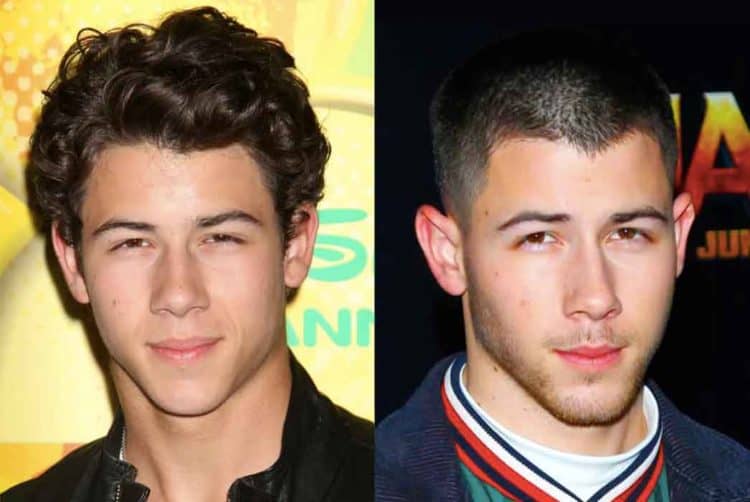
While it’s easy to believe you’re simply exhibiting the early signs of balding and lose faith, your aging hairline may not lose all of its hair. Your hairline may just be moving up.
By the time men are 35 years old, most hairlines typically move up and lose some of their fullness – this is natural.
Mature Hairline vs Receding
Mature and receding hairline types differ where the receding moves up higher on the head and affects certain areas more than the mature hairline.

Typically, you’d see the hairline moving higher with noticeable and rapid thinning at the temples. Where a mature hairline develops gracefully as a person ages.
Mature Hairline vs Baldness
Know that mature hairlines are found in many shapes, largely dependent on a person’s head and facial structure.
Typical hairlines will follow a person’s natural contours and will look symmetrical. However, other hairlines can look unbalanced or jagged like that “widow’s peak” growing in an M-shape forming with the tip in the middle of the forehead.
About 25 percent of all men start balding even before the age of 21.
With baldness (androgenetic alopecia) accounts for 95 percent of hair loss cases in men, you may not even be experiencing hair loss only maturing. Aging naturally thins out your hair, according to the American Hair Loss Association.
Signs of Hair Loss
For those who are noticing a lack of hair around their hairline and want to know now if they’re going bald, talk to a doctor first. There could underlying issues with your testosterone or even dry scalp problems that’s thinning your hair faster.
With the early signs of hair loss, men who are going bald will see aggressive thinning in the temples and corners of their hairlines, resulting in a peak of hair in the center of the forehead much sooner.
These are some signs to look for if you believe that you’re losing your hair.
While maturing headlines move up the forehead and develop, balding hairlines continue to lose hair in the corners, which creep the hairline back. These receding hairlines result in large patches of missing hair.
Excessive Shedding
Do you run your hands through your hair and find hair coming out easily? Is your shower drain full of hair? If you’re shedding daily, then you may notice more thinning.
Shedding isn’t indicative of balding. However, if you notice more hair loss or clumps of hair coming out in the shower, then you may have a more serious problem.
Stress and other factors can cause you to shed more hair. However, it’s typically for everyone to lose up to 100 hairs a day.
Smaller, Lighter, Frail Hair
How long does your hair take to grow back after a cut? As men lose more hair, their hair follicles grow smaller and thinner. So, these smaller, weaker hairs fall out more easily.
If you notice small, light hairs around your forehead, you may be experiencing pattern baldness. Everyone has small baby hairs around their hairline, however. These are a part of your juvenile hairline and may go away with age. So, if your hairline recedes more and the hair growth around your temples is shorter and lighter, it’s likely a sign of balding.
Wet Hair Shows Patches
Normal hairlines will look thinner when wet. After showering, have you ever noticed more defined patches of missing hair?
You may see more hair loss at the front of your hairline or in the back. These patches may indicate balding. Your hair may start looking ragged or “chewed out” in areas where there’s more thinning. This is an early sign that you’ll likely lose more hair.
Identify your Type of Hair Loss
Hairlines are classified based on the Norwood Scale. There are seven classes scored from 1 to 7 that define hair loss. This scale is typically used by doctors who are treating patients for hair loss and want to restructure or restore the hairline.
7 Stages of Hair Loss
There are also 7 stages of male pattern hair loss. While it’s a general scale and doesn’t perfectly represent every hairline, the seven stages will show the progression from a juvenile hairline to full male pattern baldness.

Does a mature hairline mean you’ll go bald?
Multiple studies conducted affirm that a maturing hairline isn’t a clear indicator of male pattern baldness. As noted, thinning hair is natural as you age and many men with maturing hairlines may never see balding.
However, the studies also show that men can start balding in their late 30s and it can progress to age 50 until there’s no hairline remaining.
In some cases, balding may even strike as late as age 50.
Stress and other factors can contribute to losing your hair, but if it’s male pattern baldness, you’ll likely lose hair much faster, resulting in stage 3 or 4 balding by age 40. So once it starts, men with male pattern baldness can’t stop the loss of hair naturally. Only certain treatments can restore your hairline.
Treatment Options
If your hairline is gradually moving up towards your highest forehead wrinkle, there’s no cause for alarm. However, I you fall into the other hairlines categories you might explore various treatments, at home and cosmetic options.
Surgical
Cosmetic & non-invasive
Medication & Topical
It’s always best to use U.S. Food & Drug Administration (FDA) approved medications.
Holistic
Styling
What ever you decide, be sure to do your homework and always consult your doctor before starting any new treatment or regimen.


